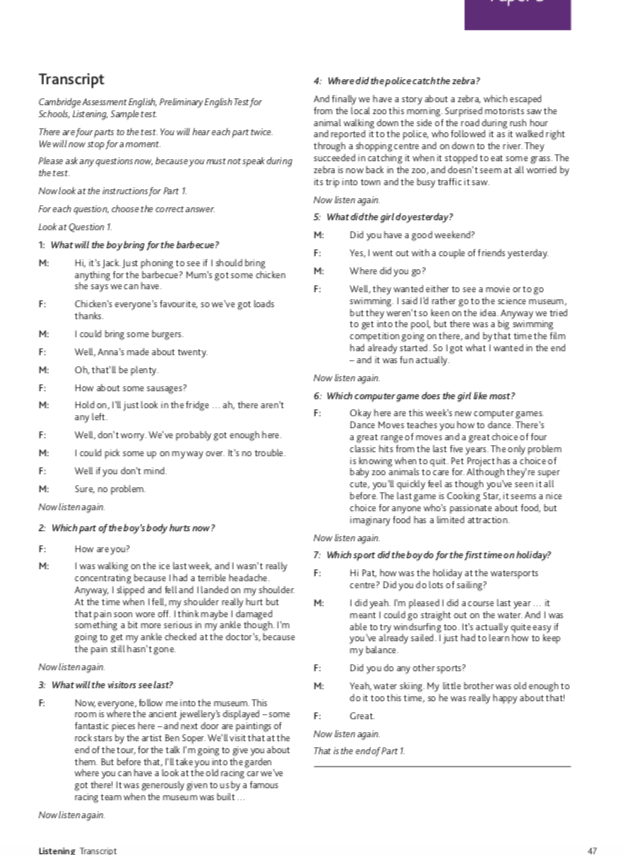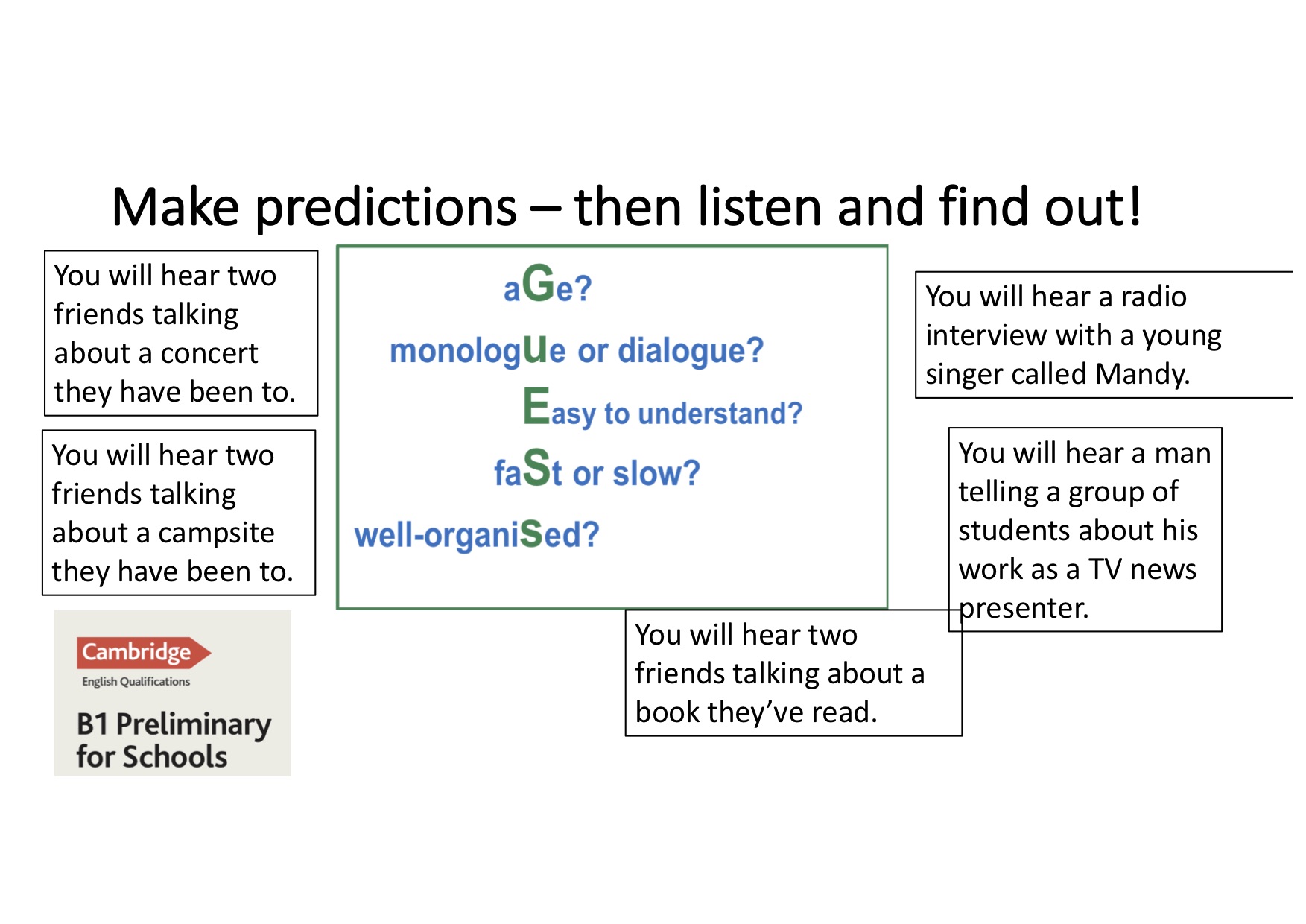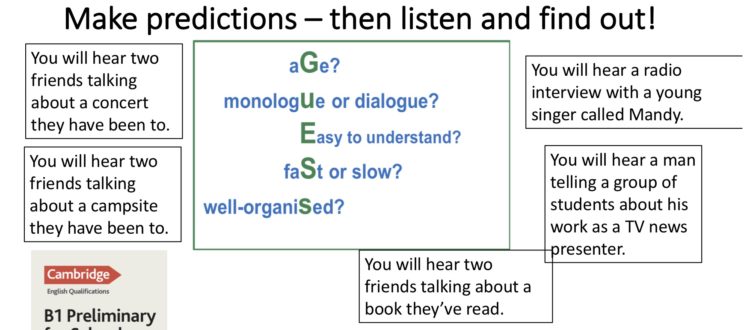About B1 Preliminary Listening Part 1
Today, I’m going to examine B1 Preliminary Listening Part 1.
The Sample Paper I am going to use for my examples is taken from the B1 Preliminary for Schools Sample Paper and is available on the Cambridge Assessment website.

https://www.cambridgeenglish.org/exams-and-tests/preliminary-for-schools/preparation/
What’s in Part 1 of B1 Preliminary Listening?
There are seven short dialogues or monologues.
For each question, students see three pictures and they have to choose the picture (A, B or C) that answers the question above the three pictures.
The monologues and dialogues
Most of the situations in Part 1 will be fairly informal – two friends chatting or a friend or family member leaving a message.
But one or two, particularly the monologues might be slightly more formal – a pilot or train driver making an announcement, or a tour guide explaining what the visitors are looking at or the timetable for the day, for example.
Tips for using the tapescripts
To reinforce this, show students the tapescripts for the seven audios for this part. You can immediately see which audios are dialogues and which are monologues.

Use tapescripts to work on language analysis – how well the speakers organise what they say, where the answer comes, etc.
Work on difficulties that students have understanding the speakers – perhaps words join together in speech, or maybe a speaker’s delivery is very fast or unclear?
Guess – what will you hear?

Ask students to look at the situation that they are going to listen to and predict things about it.
They can predict language they might hear (words and structures),
If they will hear a dialogue or monologue.
How formal or informal the language will be.
Then, play the audio and discuss their predictions and how accurate they were.
Guess – who’s speaking?
From the question, students say who they might hear.
For example: Question 4: Where did the police catch the zebra?
This could be:
a news report
a conversation between two zoo keepers
a conversation between a police officer and their family
an audio message sent to a friend or relative
Listen and order the pictures
Instead of listening to find the correct picture, and to reinforce the fact that all three pictures will be referred to, ask learners to listen and number the pictures in the order they are mentioned.
Only listen for your picture
When doing a new multiple choice task for listening and reading, you can help students gain confidence by assigning them one letter only to listen or read for and then decide if their option is the correct answer or a distractor. Again, this reinforces the fact that all pictures are mentioned in the dialogue or in the written text.
Make sets of three pictures
Clip the pictures and turn them into a set of individual pictures. Students have to make seven sets of three pictures. Again, this helps them to think about the logic, the connection between the sets of pictures.
I hope these ideas and tips will be useful to you and your students. In my next post, I’ll share some ideas for engaging with B1 Preliminary Listening Part 1.

